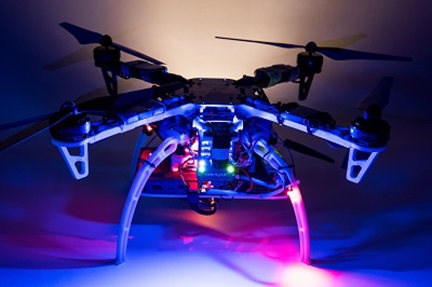
A series of ABI Research studies released in recent months sketches a promising future of robust growth in GNSS OEM markets.
The London- and New York–based company’s 2014 GNSS IC vendor matrix released today (June 30, 2014) concluded that Qualcomm is the leading GPS IC vendor, followed by Broadcom, and — for the first time — MediaTek in third place after another year of strong growth and robust shipments as a result of its targeted design strategy.
A series of ABI Research studies released in recent months sketches a promising future of robust growth in GNSS OEM markets.
The London- and New York–based company’s 2014 GNSS IC vendor matrix released today (June 30, 2014) concluded that Qualcomm is the leading GPS IC vendor, followed by Broadcom, and — for the first time — MediaTek in third place after another year of strong growth and robust shipments as a result of its targeted design strategy.
ABI Research predicts that the GNSS IC market will break $2 billon by 2016, with a host of secondary markets starting to emerge. Senior analyst, Patrick Connolly says that the firm expects that consumer GNSS IC OEMs adopting technologies the produce sub-meter accuracy, such as u-blox’s take on precise point positioning (PPP) will open up markets around unmanned aerial vehicles (UAVs), machine control, timing and synchronization, advanced driver assistance systems (ADASs), driverless cars, and other applications. As a result, total GNSS IC revenues are forecast to hit $2.75 billion in 2019, he says.
u-blox’s PPP technology uses carrier phase tracking and ionospheric correction data from satellite-based augmentation systems, such as WAAS and EGNOS, and has been implemented in the company’s single-frequency NEO-7P GNSS module,
As single-purpose portable navigation device (PND) shipments continue to fall, GNSS OEMs can expect new opportunities in cycling, eyewear, golf, and personal tracking to help the overall market to continue to grow. The total market for dedicated GPS devices in 2013 was estimated at 35 million units, which is expected to grow almost 30 percent over the forecast period, despite accelerated decline in Western PND markets.
The company notes that the arrival of wearable devices, in-store advertising, ambient intelligence, Internet of Things, and the connected home has created a lot of excitement around indoor location. “However, GNSS is still an essential technology in tying these disparate networks together and remains the cornerstone of ubiquitous location,” the company concludes.
ABI Vice-President and practice director Dominique Bonte adds, “From an automotive perspective, the connected car, infotainment, insurance, telematics/diagnostics, safety, will all increase adoption of GNSS. We can expect to see cars fitted with multiple GNSS ICs in the future.” Bonte says “strong signals” suggest that some GNSS systems, such as Galileo and GLONASS, will be mandated for regional automotive applications such as emergency calling.
GNSS OEM Innovation and Implementation
The ABI Research GNSS OEM vendor matrix compares companies on 17 criteria across the broader categories of GNSS innovation and implementation. Qualcomm remains the dominant player, according to the research firm, with a “very strong ubiquitous location platform in IZat” auguring well for success in high-volume cellular handsets in 2015 and other GNSS markets.
Broadcom continues to compete aggressively through innovation, receiving the highest score for this category for yet another year. Already in 2014, Broadcom has announced its tri-band BCM 47531 IC and the BCM 4771 GNSS system on a chip (SoC) designed for wearables and featuring a sensor hub and always-on capabilities. Broadcom has also announced a 5G Wi-Fi SoC, which supports its new proprietary fine timing measurement (FTM)–based AccuLocate technology.
u-blox has moved up a position to fourth in this year’s assessment. “It continues to grow revenue year-on-year, with little to suggest this will change in the coming year,” ABI Research said in a news release. This is the first time u-blox has finished ahead of CSR, which was ranked fifth by the market research firm.
“MediaTek has now emerged as a major threat, taking third on innovation and 2012 market share rankings, following very impressive shipments of its combo ICs into local Chinese smartphone manufacturers,” according to ABI Research, with a growing presence in other markets.
The researchers also singled out ST-Microelectronics with its new Teseo III platform offering “significant design flexibility” that will enable the company to compete aggressively in new and existing markets.





